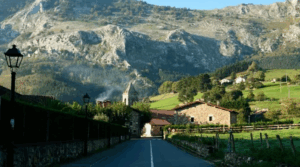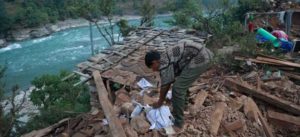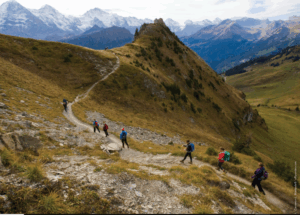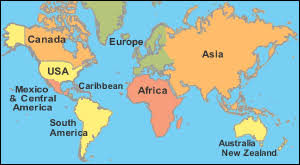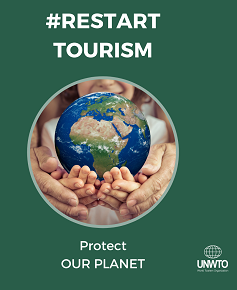Travel and tourism recovery: a perspective for South Asia and lessons for other regions in the age of COVID-19
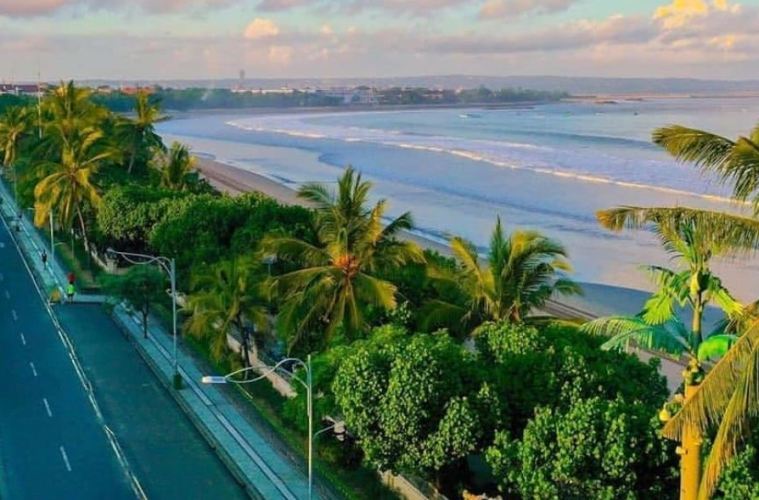
By Ritwija Darbari —
As Europe’s journey with the COVID-19 pandemic enters its next phase, many have embarked on their summer adventures to Greece, Italy or Spain, riding the wave of optimism offered by EU recommendations on opening borders. Even though the majority of the countries in Europe are past their COVID-19 peaks for now, there have been spikes and fears of a second wave. People find themselves checking government travel advisories with trepidation, almost on a daily basis, to see whether their plans will follow through.
This uncertainty and related travelers’ anxiety will be the hallmark of travel and tourism in the age of COVID-19. Given the varied recovery trajectories for countries across the world, reopening and revival strategies will have to be tailored to the specific context.
So what is in store for this sector in South Asia and what can the path to recovery of the industry look like in the region?
Travel and tourism snapshot
According to the World Travel & Tourism Council (WTTC), the travel and tourism sector accounted for 10.3% of global GDP and 330 million jobs in 2019. The sector has seen high growth in the last decade, which can be largely attributed to factors such as rising disposable incomes, the emergence of low-cost carriers, ease of travel through internet-based services and the relaxation of visa regulations.
In South Asia, WTTC estimates that the sector contributed $234 billion, or 6.6% of the region’s GDP in 2019. Within the region, the pandemic could not have come at a worse time for Nepal’s tourism industry, which has almost entirely shut down since the outbreak. The government had declared 2020 as the Visit Nepal Year, announcing a national campaign with an annual target of achieving 2 million tourist arrivals. With the country’s borders closed to adventure-seeking mountaineering crowds, the direct actors along in the tourism value chain (tour operators, trekking agencies, mountain guides and Sherpas) have lost their only source of income.
Similarly, the Republic of Maldives is uniquely vulnerable to external shocks, and tourism constitutes a third of the small island state’s national revenue. Neeza Imad, Minister of State for Economic Development of Maldives, says “COVID-19 has had a devastating impact on our economy, particularly in relation to SMEs that account for most of the tourism related employment.” As a result of the ongoing crisis, the International Monetary Fund has projected that the country’s economy will contract by 8.1% in 2020.
First steps to recovery: rebuilding consumer trust and confidence
After four months of lockdown, the Maldives welcomed tourists back to its resorts and hotels, after publishing a comprehensive sector reopening strategy aimed towards building trust and credibility among potential tourists. Minister Imad signals a strong welcome message to the international tourist community: “We welcome back tourists as resorts opened on the 15th of July 2020. Tourists can be assured that the Government has put into place strict safety and hygiene standards to ensure the safe reopening of the country to tourists from around the world when travel restrictions begin to ease.”
Globally, in an effort to establish a harmonized approach towards setting guidelines around the reopening of the sector, WTTC launched the “Safe Travels” stamp, which has been designed to allow potential travelers to recognize establishments around the world which have adopted standardized health and hygiene protocols. Backed by the United Nations World Tourism Organization (UNWTO), the stamp may be used across the travel and tourism value chain to certify hotels, restaurants, airlines, cruise lines, tour operators, restaurants, outdoor shopping, transportation and airports. Since its launch on 27 May, the WTTC established protocols have been adopted by destination countries and cities around the world such as Turkey, Egypt, Portugal, Seville and Cancun.
Regional cooperation towards restoration
Based on current trends and survey studies of consumer preferences and behavioural patterns, projections on resumption of travel indicate that recovery will be proximity-based, gradually moving from domestic to regional and lastly intercontinental. As part of the institutional response to the COVID-19 crisis, the World Economic Forum regularly convenes a multistakeholder community of prominent experts, policymakers and businesses from the region as the Regional Action Group for South Asia, which met virtually most recently in July to discuss the impact of the pandemic on the travel and tourism industry and the measures that need to be adopted to support recovery efforts.
Public sector representatives and businesses from the region agreed that domestic tourism will lead the way in this recovery journey. This puts countries with a large domestic market, such as India, at an advantage since they will be able to create more favourable fiscal conditions for stimulating growth in the sector while actively promoting local and regional tourism
As a first step towards recovery, the possibility of establishing travel bubbles or corridors – which would allow countries in the region to put in place protocols for opening up channels for air travel on a reciprocal basis – was also discussed among members of the Forum’s Regional Action Group for South Asia. Establishing these safe zones bilaterally or among a group of countries with similar recovery trajectories would build focused capacities to safely manage the flow of tourists and allow testing of the framework for reopening on a larger scale at a later stage.
This approach would also permit a higher degree of control over a smaller tourist flow, which would enable faster rollback of open channels in the event of unanticipated spikes in the number of infection cases. Most recently, India and Maldives announced that they will be establishing a travel bubble to strengthen connectivity and tourism ties. Such agreements are likely to come up with other countries in the region as terms and conditions of establishing these safe travel zones are negotiated.
Niche tourism push
The World Economic Forum’s Travel and Tourism Competitiveness Report published in 2019 attributes natural and cultural diversity along with price competitiveness for the emergence of South Asia as an attractive tourist destination. This is where the region can leverage regional cooperation towards building a sector revival strategy. For example, India could explore an Adventure Tourism circuit with Nepal, Bhutan and Sri Lanka, where travelers get to experience the enthralling Himalayan landscapes, followed by a trip down south to explore some of Sri Lanka’s best surfing spots. Similarly, a Spiritual Tourism circuit could offer the international traveler a well-marketed package to discover the historical monuments of faith systems that bind the region together.
An opportunity that can be explored to bring back the international traveler to India is the niche segment of medical, wellness and Ayurveda tourism. Had the COVID-19 pandemic not erupted when it did, the medical tourism space would have touched the $9 billion mark in 2020.
“India has been a long-preferred destination for medical tourism but with the COVID-19 pandemic, this sub-sector is now one of the worst-hit,” explains Shobana Kamineni, Executive Vice-Chairperson, Apollo Hospitals Enterprise, India. “As restrictions on international air travel begin to ease from select countries, adequate support from the Government will be needed to further facilitate medical travel, with SOPs and safety protocols across each stage of patients’ care continuum. We will have to actively promote India’s role in serving those international patients that urgently need our care and help build trust that Indian hospitals, as well as health tech companies, are ready to welcome them again.”
Long-term measures to build resilience
In an effort to build back better in the post-COVID world, it would be critical to retain and inject capital investment in the sector so that it can achieve its true potential as a vehicle for growth and development. In June, the International Finance Corporation (IFC) announced that it is making a $175 million investment in John Keells Holding. This will go towards expanding the company’s supermarket chain in Sri Lanka and funding the development of hotel properties in Sri Lanka and the Maldives, making it IFC’s largest ever investment in Sri Lanka and the first supporting investments in the Maldives in a decade.
Krishan Balendra, Chairman, John Keells Holding, shares his views on the potential of this sector in the country: “We believe the tourism growth opportunity for Sri Lanka is immense as the number of arrivals is small compared to other countries. We are catching up after many years of war and we intend to build our brand and service levels to be on par with the best in the world.”
Bhutan – which is the only South Asian country to have zero COVID-19 related fatalities to date – is also looking into how it can take this pivotal moment in the region’s shared history to strategize growth in the sector. The country’s “High Value, Low Volume” tourism policy anchored in promoting sustainable tourism makes it a unique and exclusive travel destination. While commenting on the present situation in the country, Ugyen Dorji, Minister of Labour and Human Resources, Government of Bhutan, said, “Though well managed in Bhutan, the COVID-19 pandemic has of course still had a negative impact on key national earnings from tourism. The Government of Bhutan is working on strengthening the tourism infrastructure, developing new tourism products and services and increasing entry points for tourists. This investment will go a long way in building the required ecosystem to support the intra-regional demand for tourism and promote sustainable job creation in the sector.”
As South Asia continues to face the challenges posed by the COVID-19 crisis, it is evident that there is immense potential in the travel and tourism sector, which can be harnessed to contribute to the region’s economic recovery.
Further investments in the physical as well as technological infrastructure will be required to enhance the competitiveness of the sector in the region to generate more income and employment opportunities along the travel and tourism value chain. The sector must find innovative means to bounce back and build future resilience as composite lockdowns get graded relaxation.
Based on experiences in regions where this journey has already begun, greater public-private cooperation will be needed to establish and comply with health and safety standards and protocols, while communicating those with clarity and consistency to potential travelers to rebuild their trust and confidence. Close coordination among sectors such as aviation, railways, hospitality and insurance will be needed to adapt to the evolving health situations in particular countries.
Travelers will also have to do their bit by preparing to deal with the uncertainties, while ensuring that they comply with changing regulations that help countries manage fluctuations in the number of COVID-19 cases, which will undoubtedly arise as borders open up and the world becomes more mobile again.
The writer is Community Specialist, Business Engagement, India and South Asia, World Economic Forum .
Aug. 2020 Source : World Economic Forum
Image : Bali ( Indonesia ) tourism is losing AUD $1 Billion (IDR 9.7 Trillion) per month . Photo – The Bali Sun

